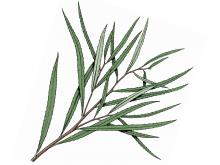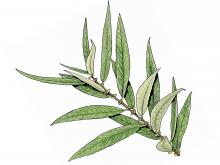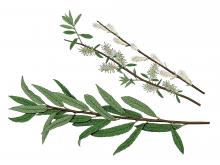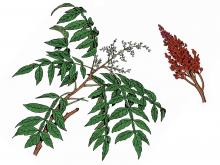Trees, Shrubs and Woody Vines
Media

Species Types
Scientific Name
Salix spp. (about 12 species in Missouri)
Description
Exotic willows are available at lawn and garden centers, but there are several willow species that are native to Missouri. Most are rather humble colonizers of gravel bars, riverbanks, and lakesides. Many are important for human economic interests. All have a place in our wild ecosystems.
Media

Species Types
Scientific Name
Betula nigra
Description
River birch is a native tree easily identified by its reddish, papery, peeling bark. It is used extensively in landscaping, where many-stemmed groupings are planted in moist places in yards and along streams and ponds.
Media

Species Types
Scientific Name
Quercus prinoides
Description
The dwarf chestnut oak, though only 3–10 feet tall and the shortest of Missouri's oaks, can nevertheless produce abundant acorns that are relished by several types of birds and mammals.
Media

Species Types
Scientific Name
Salix interior (formerly S. exigua)
Description
Identify sandbar willow by its very narrow leaves with widely spaced, slender teeth along the margins. This is a good soil binder and bank stabilizer; it prevents washing and erosion of alluvial soil.
Media

Species Types
Scientific Name
Salix caroliniana
Description
Ward's willow, or Carolina willow, is one of the first woody species to occupy the outer edges of gravel bars in a stream. Common in the Ozarks, it occurs nearly statewide.
Media

Species Types
Scientific Name
Salix petiolaris
Description
A clumped shrub that grows naturally only in the northeastern part of Missouri, meadow willow lives in low, wet ground in mud or sandy gravel along streams and in wet meadows. Rare in our state, it is perhaps best identified by examining the leaves.
Media

Species Types
Scientific Name
Rhamnus cathartica
Description
You might see common buckthorn for sale at a nursery, but don’t buy it! At least six states have banned this invasive exotic, and the difficult-to-control plant is causing problems here in Missouri, too. Learn how to identify it — and avoid it!
Media

Species Types
Scientific Name
Corylus americana
Description
American hazelnut is a thicket-forming shrub that grows to about 10 feet high. It is prized for its edible nuts, which are covered by a distinctive leafy or papery, jagged-edged bract.
Media

Species Types
Scientific Name
Rhus copallinum
Description
Winged sumac is most common south of the Missouri River. The "wings" in the name refer to the narrow, flattened leafy structures running along the central stems of the compound leaves.
Media

Species Types
Scientific Name
Rhus spp.
Description
Sumacs are shrubs or small trees that often form colonies from their creeping, branched roots. The foliage usually turns brilliant shades of red in early autumn. The clusters of berrylike fruits are red.
See Also
About Trees, Shrubs and Woody Vines in Missouri
There are no sharp dividing lines between trees, shrubs, and woody vines, or even between woody and nonwoody plants. “Wood” is a type of tissue made of cellulose and lignin that many plants develop as they mature — whether they are “woody” or not. Trees are woody plants over 13 feet tall with a single trunk. Shrubs are less than 13 feet tall, with multiple stems. Vines require support or else sprawl over the ground.





















